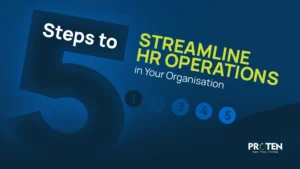Did you know that 90% of startups fail within their first three years? While there are many contributing factors, a significant portion of these failures can be attributed to a lack of understanding of the external environment. Businesses operate within a complex web of influences, and those that can effectively navigate these external forces are far more likely to achieve success. This is where the PESTLE analysis comes in.
PESTLE, an acronym for Political, Economic, Social, Technological, Legal, and Environmental factors, is a strategic framework used to assess the broad external environment that impacts a business. By systematically analyzing these six key areas, businesses can gain valuable insights to inform strategic decision-making, identify potential threats and opportunities, and ultimately improve their chances of long-term success.
This article delves into the PESTLE framework, providing a comprehensive understanding of each factor and its potential impact on a business. We will explore real-world examples to illustrate how these factors can influence business decisions, and discuss how to conduct a thorough PESTLE analysis for your own organization.
Decoding the PESTLE Framework
1. Political Factors:
The political landscape can significantly impact a business. Factors to consider include:
- Government policy: Changes in government regulations, tax structures, or trade policies can have a direct impact on a business’s operations and profitability.
- Political stability: Political instability can disrupt supply chains, lead to currency fluctuations, and create an uncertain business environment.
- International relations: Trade agreements, sanctions, and foreign policy decisions can affect a company’s ability to import or export goods and services.
Example: A pharmaceutical company operating in a country with a new government that prioritizes price controls on medications may need to adjust its pricing strategy or risk losing market share.
2. Economic Factors:
The overall health of the economy plays a crucial role in a business’s success. Key economic factors to analyze include:
- Economic growth: A strong economy typically results in increased consumer spending, which benefits businesses. Conversely, economic downturns can lead to decreased demand and financial strain.
- Inflation and interest rates: Rising inflation can erode profits, while high-interest rates can make it more expensive for businesses to borrow money.
- Currency exchange rates: Fluctuations in currency exchange rates can impact the cost of imported materials and the competitiveness of exports.
Example: A clothing retailer facing rising inflation may choose to source materials from a different country with a weaker currency to maintain profit margins.
3. Social Factors:
Understanding the social and cultural climate is essential for businesses. Important social factors include:
- Demographics: Population age structure, income levels, and educational attainment can influence consumer behavior and product demand.
- Lifestyle trends: Changes in consumer preferences, social attitudes, and environmental awareness can create new market opportunities or pose challenges.
- Cultural values: Cultural norms and expectations can influence marketing strategies, product development, and employee relations.
Example: A food company may develop a line of organic and vegan products to cater to the growing demand for healthy and sustainable food options.
4. Technological Factors:
Technological advancements can have a disruptive impact on businesses. Key technological factors to consider include:
- Automation: Advances in automation can reduce labor costs, improve efficiency, and transform production processes.
- Emerging technologies: New technologies like artificial intelligence, blockchain, and the Internet of Things (IoT) can create entirely new business models and disrupt existing industries.
- The pace of technological change: The rapid evolution of technology requires businesses to be adaptable and constantly innovate to remain competitive.
Example: A taxi company may need to invest in ride-hailing technology or risk losing market share to competitors like Uber and Lyft.
5. Legal Factors:
The legal environment sets the rules for businesses to operate. Key legal factors include:
- Employment laws: Regulations regarding minimum wage, overtime pay, and worker safety influence employee compensation and management practices.
- Health and safety regulations: Businesses must comply with regulations to ensure the safety of employees, customers, and the environment.
- Consumer protection laws: Laws governing product liability, data privacy, and advertising practices impact how businesses interact with consumers.
Example: A social media platform may need to update its privacy policy to comply with new data protection regulations.
6. Environmental Factors:
Environmental concerns are becoming increasingly important for businesses. Key environmental factors to consider include:
- Sustainability: Consumer demand for eco-friendly products and practices is growing, requiring businesses to focus on sustainability efforts.
- Environmental regulations: Regulations concerning pollution control, waste disposal, and resource use can impact a business’s operations and costs.
- Climate change: The changing climate can disrupt supply chains, create resource scarcity, and pose new challenges for businesses.
Conducting a PESTLE Analysis: A Step-by-Step Guide
Having explored each factor in detail, let’s delve into how you can conduct a PESTLE analysis for your own business:
1. Define the Scope:
- Industry: Focus on the specific industry your business operates in. The impact of a PESTLE factor may vary depending on the industry.
- Geographic Location: Consider the specific country or region your business operates in, as regulations and economic factors can differ geographically.
2. Research and Gather Information:
- Government websites: Stay updated on policy changes, tax regulations, and trade agreements.
- Industry reports and publications: Gain insights into industry trends, economic forecasts, and technological advancements.
- News sources: Track current events and their potential impact on your business.
- Consumer research: Understand changing demographics and consumer preferences.
3. Analyze the Impact:
- For each PESTLE factor, identify potential threats and opportunities.
- Threats are external factors that could negatively impact your business. For example, a new environmental regulation might increase your production costs.
- Opportunities are external factors that could benefit your business. For example, a growing demand for sustainable products could open up new markets for your company.
- Evaluate the likelihood and potential severity of each threat and opportunity. Not all threats and opportunities are created equal. Some may be more likely to occur or have a more significant impact on your business.
4. Develop Actionable Strategies:
- Develop strategies to mitigate threats and capitalize on opportunities. For example, you might need to invest in pollution control technology to comply with new environmental regulations, or develop a line of eco-friendly products to cater to growing consumer demand.
- Prioritize your strategies based on the urgency and potential impact. Focus on addressing the most critical threats and seizing the most promising opportunities first.
5. Monitor and Update:
- The business environment is constantly changing, so it’s crucial to regularly monitor PESTLE factors and update your analysis.
- Stay informed about new developments and adjust your strategies as needed.
Beyond the Basics: Using PESTLE Effectively
1. Consider the Interconnectedness of Factors:
- PESTLE factors are not independent; they often interact and influence each other. For example, a change in government policy (political) could lead to economic growth (economic), which could in turn drive increased consumer spending (social).
- When conducting your analysis, consider how different factors might interact and create a holistic understanding of the business environment.
2. PESTLE Analysis as a Starting Point:
- PESTLE analysis is a valuable tool, but it’s not a one-size-fits-all solution. You may want to consider additional factors specific to your business, such as industry regulations, competitor analysis, and technological disruptions unique to your field.
3. Integrate PESTLE with Other Strategic Tools:
- PESTLE analysis can be effectively combined with other strategic frameworks like SWOT (Strengths, Weaknesses, Opportunities, and Threats) analysis. By understanding your internal strengths and weaknesses alongside the external environment, you can develop a more comprehensive strategic plan.
4. Foster a Culture of Continuous Scanning:
- Businesses that excel at strategic planning actively scan their environment for emerging trends and potential disruptions. Encourage a culture within your organization where employees are aware of external factors and can contribute insights to the PESTLE analysis process.
In Conclusion…
The PESTLE framework is a powerful tool for any business leader seeking to navigate the complexities of the external environment. By systematically analyzing political, economic, social, technological, legal, and environmental factors, businesses can gain a deeper understanding of the forces shaping their market and make informed decisions that lead to long-term success. Remember, PESTLE analysis is not a static exercise; it’s an ongoing process of monitoring, adapting, and thriving in a dynamic business landscape.










